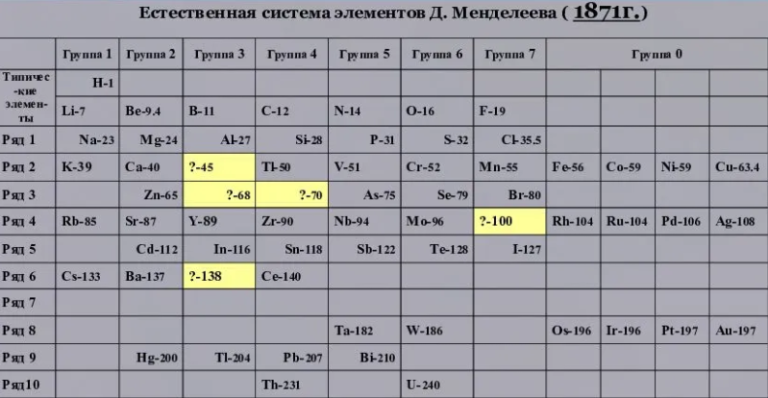LED lamp aging test
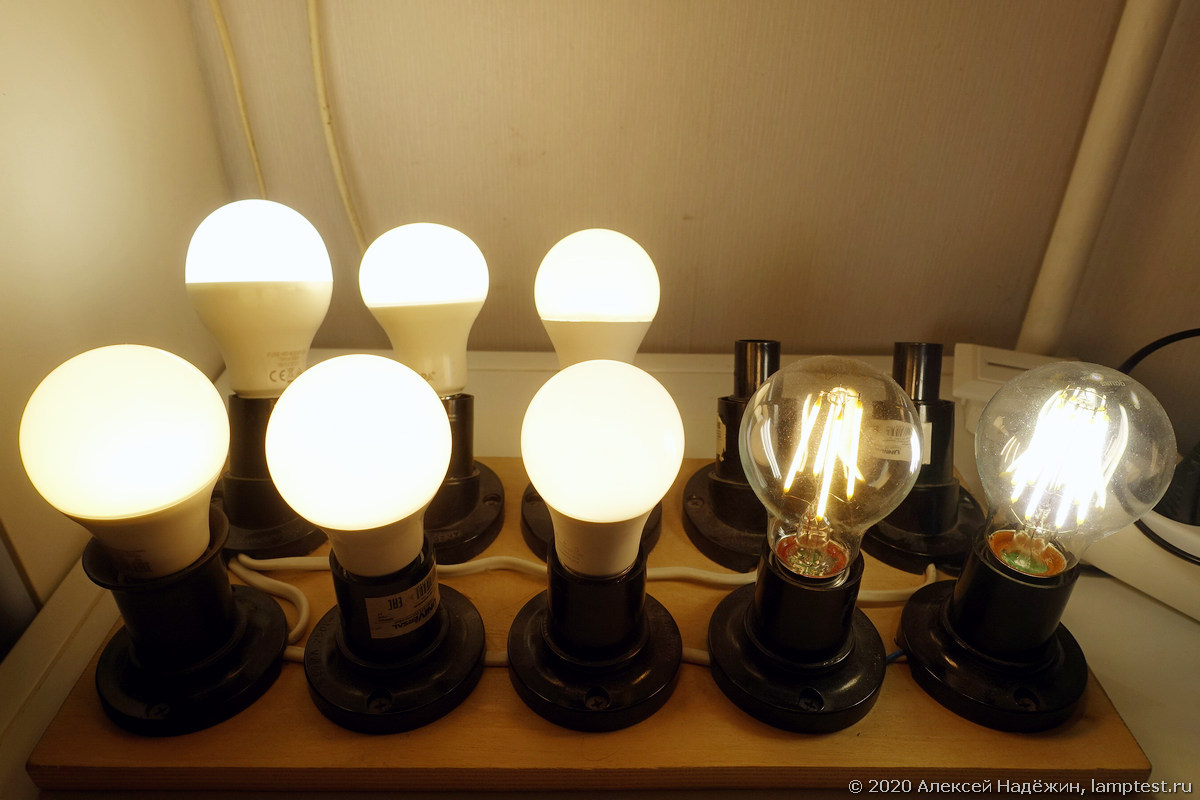
I selected eight very different LED lamps: good and bad, powerful and not very, ordinary and filament.
The test involved lamps:
1. GP LEDA60-14WE27-40K-2CRB1 14 W 1521 lm – as an example of a fairly powerful and high-quality lamp;
2. Era ECO LED A65-20W-827-E27 20 W 1600 lm – as an example of the most cheap powerful lamp;
3. ASD LED-A60 714118 15 W 1350 lm – as another example of the most cheap powerful lamp;
4. OSRAM LEDSCLA60 7 W 600 lm – as an example of a high-quality medium-power lamp;
5. Lexman 7217682701R 10 W 806 lm – as an example of a cheap, but high-quality medium-power lamp;
6. Saffit SBA6010 10 W 800 lm – as a sample of the most cheap medium-power lamp;
7. Osram LEDSCLA60 FIL 7 W 806 lm – as an example of a high-quality filament lamp of medium power;
8. Gauss 102802215 Graphene 15 Watt 1740 lm – as a sample of the most powerful filament lamp.
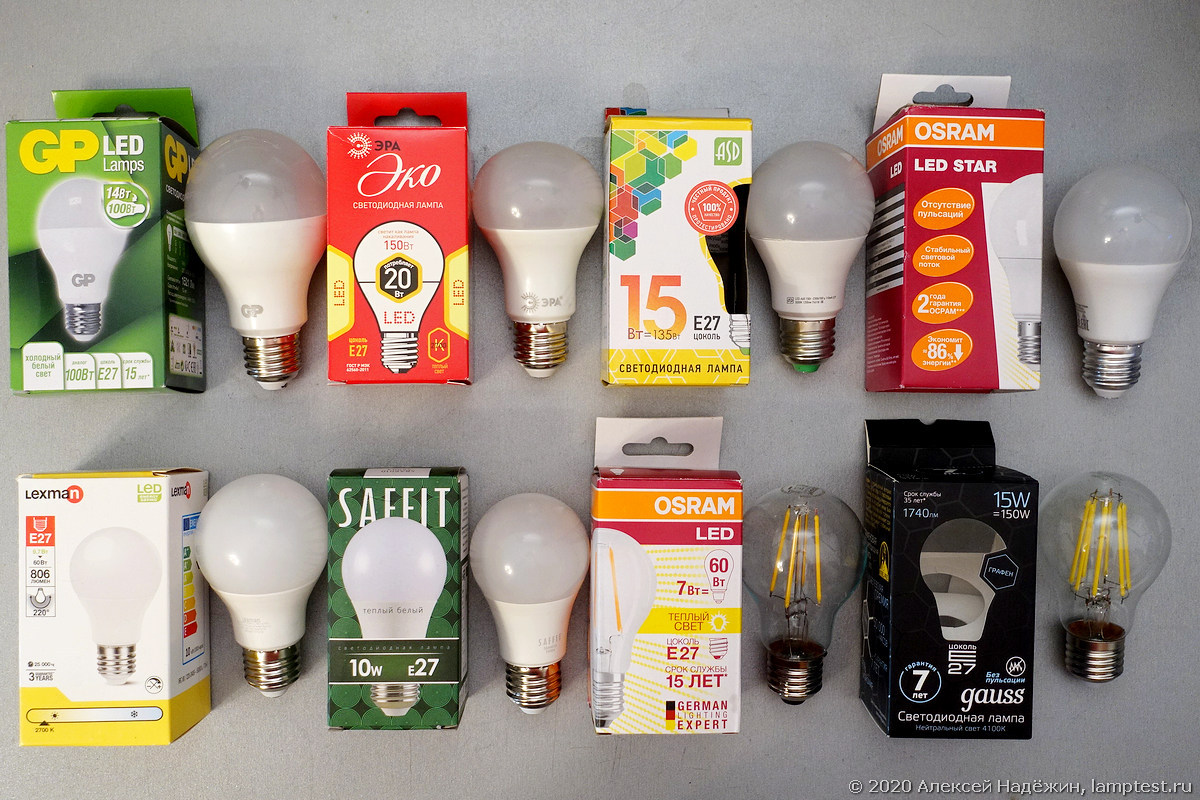
For precise control of the operating time, an electromechanical counter was used.
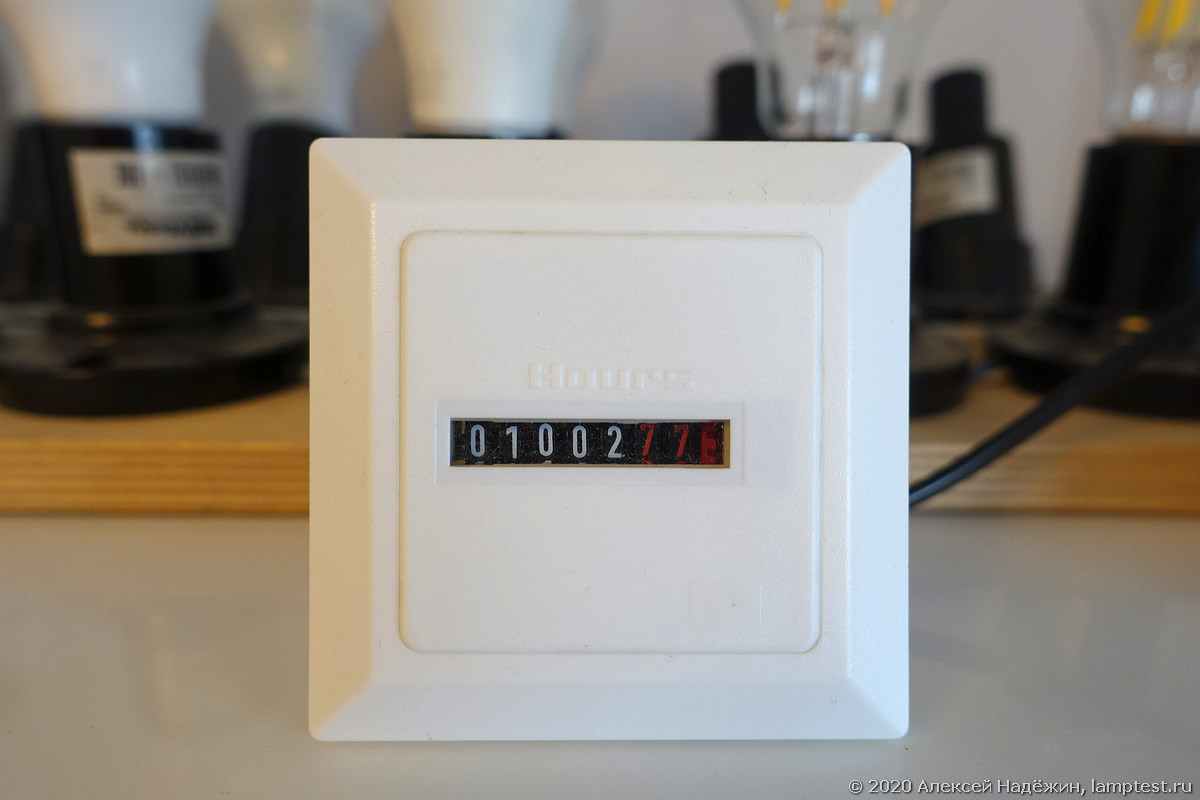
This test took not only four months of time, but also required 88 kWh of electricity, increasing my electricity bill by 360 rubles. 🙂
The parameters of the lamps were measured three times: before the experiment, after 500 hours of operation, and after 1000 hours of operation.
Luminous flux, color temperature, and color rendering index were measured using a two-meter integrating sphere and an Instrument Systems CAS 140 CT spectrometer, and the power consumption of the Robiton PM-2. The lamps were powered by a stabilized voltage of 230 V. Before measurements, to stabilize the parameters of the lamp, they were heated for half an hour.
The power of all lamps after the test has not practically changed (I think no one will be surprised that the actual power of some lamps is 30-50% less than indicated).
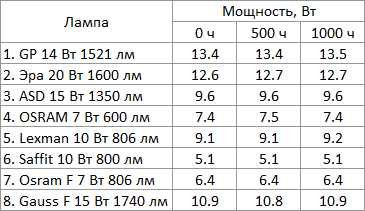
The color and color rendition parameters of all lamps also remained almost unchanged. “Burnout phosphor” is not detected.
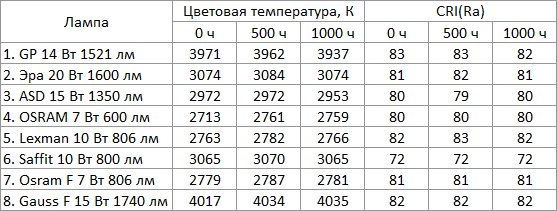
The luminous flux of a part of the lamps after 500 and 1000 hours of operation, as expected, fell.
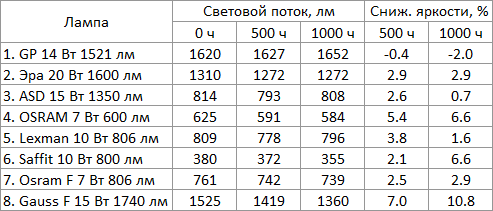
However, at GP it unexpectedly increased at first by 0.5%, and then by another 1.5%. Perhaps this is due to the measurement error, or maybe some processes actually occur in the lamp over time, because of which it starts to shine a little brighter.
Only in three out of eight lamps the drop in luminous flux after 1000 hours of operation exceeded 3%.
A 6.6% fall was recorded in the cheap Saffit lamp and, unexpectedly, in the considered good OSRAM lamp. The largest drop in brightness is 10.8% for a powerful Gauss filament lamp (yes, filaments in it have a hard time).

A thousand hours is the year of operation of the lamps in the “3 hours a day” mode. I will continue the experiment and take measurements after two and three thousand hours of operation of these lamps. I will report closer to the New Year.
© 2020, Alexey Nadezhin





